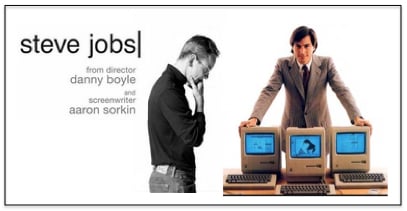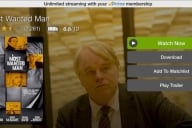You have /5 articles left.
Sign up for a free account or log in.
Whatcha doing this weekend? Are you thinking about a movie? If so, then perhaps you should consider the new Steve Jobs movie, based in part on the authorized Jobs biography by Walter Issacson with a screenplay by Aaron Sorkin who also wrote the screenplay for The Social Network, about Facebook and its founder Mark Zuckerberg.
Steve Jobs (the movie) has garnered generally strong reviews (NY Times, LA Times, Rotten Tomatoes), even as his widow, Apple insiders, and long-time associates say the film does not accurately reflect the Steve Jobs they knew.
The outline of the Jobs movie is now well known: this is a three act play, each segment built around the launch of a new computer: the Macintosh in 1984 at De  Anza Community College, across the street from the Apple campus in Cupertino; the NeXT computer in October, 1988; and the iMac in June, 1998.
Anza Community College, across the street from the Apple campus in Cupertino; the NeXT computer in October, 1988; and the iMac in June, 1998.
The arguments about the portrayal of the Steve Jobs in the film notwithstanding, there is another way to view this movie. It is a catalyzing reflection of the zeitgeist (“the time spirit”) that Jobs and those who journeyed with him brought to the “technology revolution” marked by the launch of the Macintosh, the NeXT Cube, and iMac.
And the zeitgeist factor was significant, especially in colleges and universities. Although acknowledged only in passing in the NeXT segment of the film, higher education played a significant role in the launch of both the Macintosh and the NeXT.
In spring 1983, Drexel University was the first college to commit to buy the Macintosh for its students, months ahead of public presentation of the Mac in January 1984. And the Apple University Consortium of some two dozen elite colleges and universities provided a significant endorsement for the Mac concurrent with the 1984 launch.
Moving forward, the originally espoused raison d’etre for the NeXT cube was to create a workstation for university students and researchers. While the NeXT machines were not a commercial success, Tim Berners-Lee used NeXT platforms to develop the World Wide Web.
Steve Jobs and his computers – the Mac, the NeXT Cube, and the iMac – helped to fuel the continuing, great aspirations for the role of technology in higher education. And it is in this way that Steve Jobs, the movie, is a reminder of a zeitgeist – now seemingly long ago and far away – when computers still seemed magical and were still unique, not ubiquitous.
If you lived through this history, or want to know a little more about it, then Steve Jobs is worth seeing.
Happy weekend!
Disclosure: Apple is a corporate sponsor of The Campus Computing Project and NeXT was a project sponsor for several years beginning in 1990. Additionally, I served as a consultant to Apple and the Apple University Consortium from 1985-1987.
Follow me on Twitter: @digitaltweed


